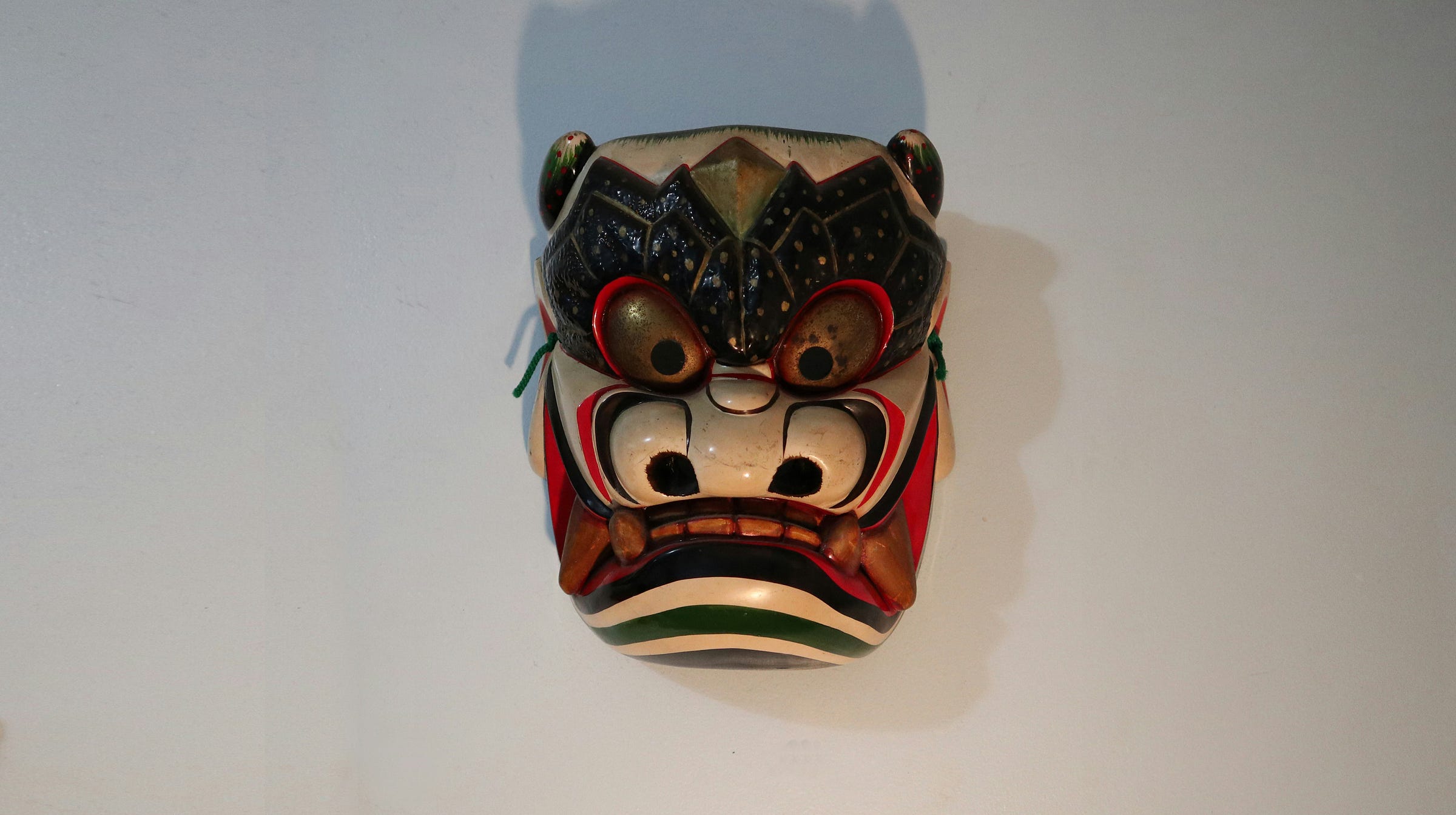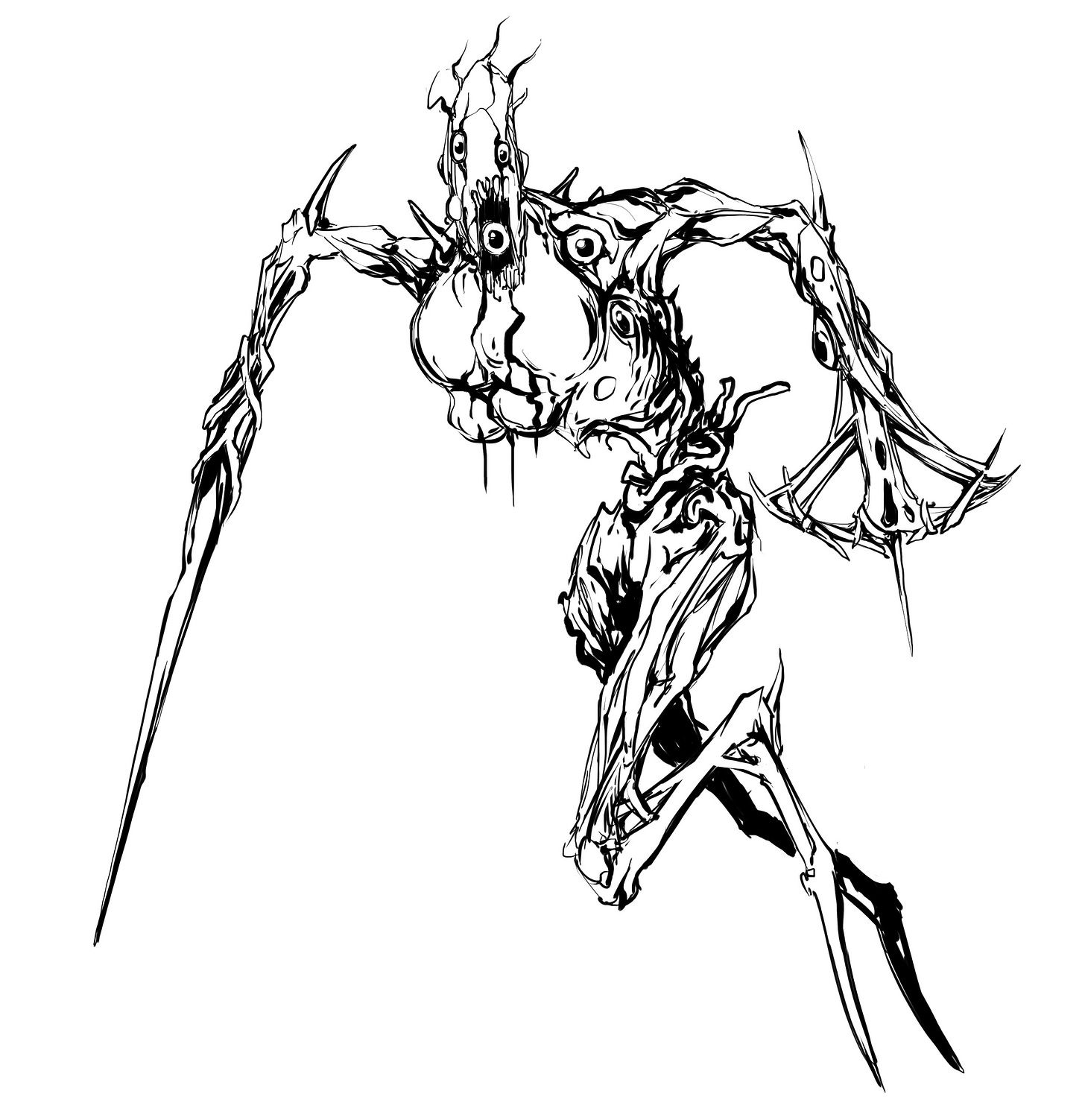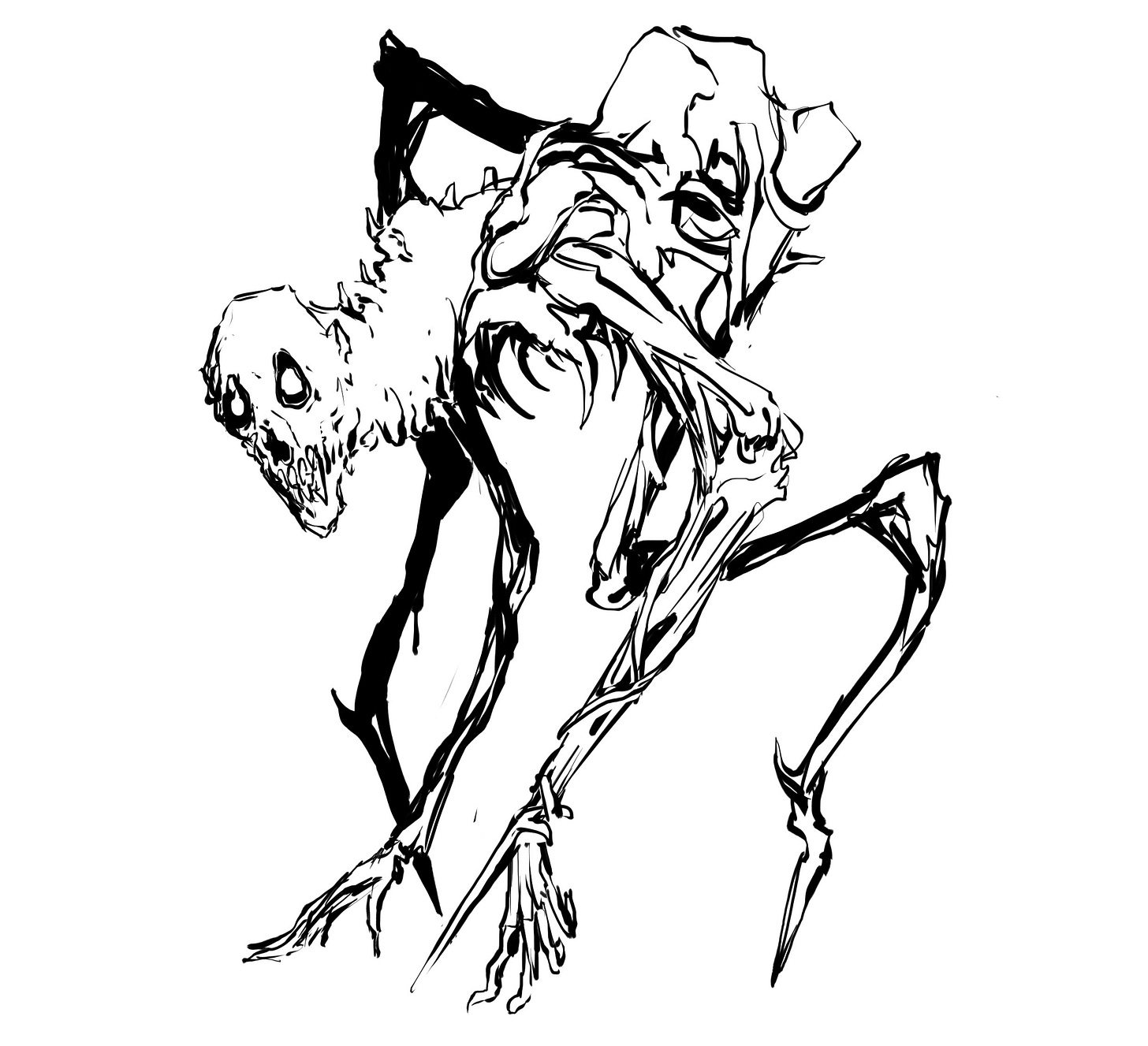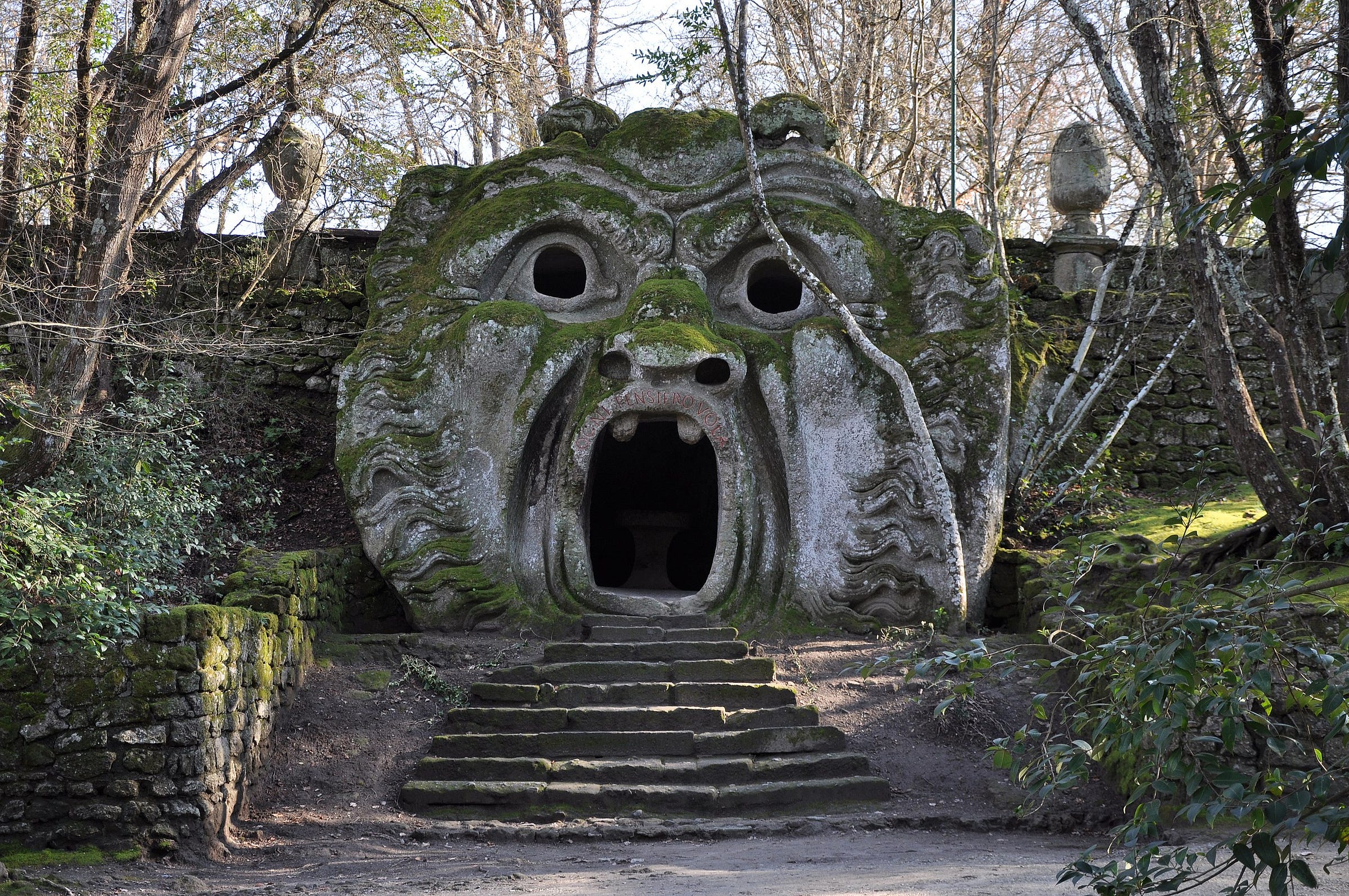Find the levity in OSR games, drink the worst potions and steer clear from the Ogresphere
This month, we talk about silliness in OSR and how Ogres embody modern macho voracity. Plus, we provide you with disgusting monsters for your campaigns.

Laugh and Laugh Again
“A laugh will bury you” is a phrase from the 19th century attributed to the anarchist Mikhail Bakunin, but in the world of TTRPGs, it can take on very different meanings. We often forget that the world of role-playing games is a pop culture industry, and as such, it must constantly follow trends or risk economic failure. We’ve repeatedly heard publishers claim they had “found the winning formula” with the same confidence as a gambler who “has a system to make easy money,” sometimes even with immediate results to back up their claims. However, this reasoning often overlooks a crucial factor: time, money, and energy investments.
At Oddplan, we’ve discussed the need to understand that a market follows specific rules. Unfortunately, the publishing world and the audience often mistake large Kickstarter numbers for actual success, ignoring what any project manager with basic skills could explain as a simple cost/benefit ratio. To put it bluntly, would the same project have achieved similar results with less effort? Or could it have been even more successful under different circumstances? Like it or not, there are no absolute “winning ideas,” especially in our world, where projects often come packed with unnecessary gimmicks to entice backers.
Oddplan is more focused on providing players with tools to create experiences. That’s why we continuously analyze and reflect on this wild TTRPG world.
Now, let’s return to that laughter capable of burying everything—this time shifting from the entrepreneurial realm to OSR games, which often emphasize decay, ugliness, and death.
But what does OSR mean? This question, which we see repeated endlessly (and is even banned in some communities due to the legendary social battles it ignites), has no definitive answer. However, we can identify a clear trend from recent years.
OSR games are often lethal and straightforward, with survival at the core of gameplay. This is why we developed the Blood Engine, but that doesn’t mean the OSR experience is—or should be—limited to this aspect. By now, you know Oddplan loves to deconstruct and rebuild things to explore different perspectives. That’s why, some time ago (as we’ve mentioned in past newsletters), we decided to develop another OSR-style project in parallel: Goblindom - Live, Evolve, Die.
While the Blood Engine is a standalone system that leans into the deadliest OSR traditions, with Goblindom, we chose to use the Copperhead System (the same one used in Epigoni Essential) and experiment with a style of OSR that is rarely discussed: weird and funny OSR.
Let’s be honest: the internet is full of memes poking fun at the classic adventurer’s lifestyle, often summed up as “you’d do anything except go to therapy.” We see orphans and war victims who choose to explore abandoned ruins infested with monsters and curses as a career path. Given the global economic situation of 2025, this might not seem entirely irrational, but in a fantasy world, it’s undeniably bizarre when viewed with a more “realistic” lens.
Especially when you step back and observe a session where players prod every dungeon tile with a ten-foot pole, adventurers go into full paranoia over an old lady offering them food and shelter, or when one character dies a gruesome death, only to be replaced moments later by someone conveniently waiting in the next room.
Let’s be honest: one of the strengths of our hobby is the same as ice cream—we can enjoy different flavors, switch things up, and indulge our preferences as needed. On the one hand, OSR can deliver a raw, strategic experience; on the other, it can embrace the simple joys of casual beer-and-pretzel sessions where the main goal is an adventure. If Richard I dies in a tragic potion mishap, Richard II is ready to take his place.
While OSR may be the noble ancestor of Soulslike video games (a topic for another time), we can also learn design and storytelling lessons from video games. Imagine a deadly game where studying the environment and enemy patterns is key, where the risk of starting over is ever-present—but now make it colorful and fill it with quirky enemies. What do you get? Super Mario.
A mustachioed Italian plumber abandons his job to embark on bizarre adventures, battling fire-breathing foes, navigating trap-laden castles, and collecting power-ups from blocks marked with question marks. High lethality, skill-based progression, surreal situations, and a protagonist who isn’t a hero but an ordinary guy thrown into an adventure—doesn’t this sound like the spirit of weird OSR?
Ultimately, as designers, we don’t sell brilliant stories—that would make us writers or screenwriters. What we provide is a rules system that allows players to experience what they desire. We are more service providers than passive entertainment creators, offering rulebooks that act as a declaration of intent for the type of session players can expect.
So, circling back—can you laugh and still experience a total party kill (TPK)? Absolutely. Not everything has to be grim and dark. There’s room for Monty Python-style killer rabbits, bumbling rogues who barely scrape by, and wizards performing absurd experiments just because they can. And in today’s often dystopian world, we owe it to our players to provide not just entertainment, but the permission to take things a little less seriously. We owe it to Richard I. And Richard II. And Richard III. And so on.
Toybox: The Symbiotic Master and Dregs
Last month, we provided a Curio table to spice up your Blood Engine adventures. Among the items was the Potion of Living Victory, capable of transforming characters in practical and terrifying ways. Today’s monsters answer a chilling question: What happens when someone drinks not just one but multiple Potions of Living Victory in a mad pursuit of perfection?
Click the yellow button below to access the stat blocks for these two new creatures—ready to slot into your next nightmare-fueled session.
As always, you can find Blood Engine on itch.io and DriveThruRPG.
Who’s Afraid of the Big Bad Orc?
Orcs and Ogres are often discussed, but what is their true history?
Orcus was the god of the Underworld in early Roman mythology, though his origins are Etruscan. He appears in Etruscan tomb frescoes as a bearded, hairy giant. Orcus survived into the Middle Ages as a folkloric figure, with aspects of his cult transforming into the image of the “wild man,” celebrated in rural European festivals that persisted into modern times. Consequently, much of what we know about the traditions associated with Orcus comes from medieval sources.
Due to his association with death and the Underworld, the term orco began to be used for other monstrous creatures and appeared in medieval bestiaries, particularly in Italy. In Italian folklore, an orco is an anthropomorphic being with bestial and near-demonic traits. References can be found in the works of Jacomo Tolomei, Fazio degli Uberti, and Ristoro Canigiani—the latter explicitly describing the orco as a boogeyman used to scare children. A description closer to the modern stereotype appears in Orlando Innamorato by Matteo Maria Boiardo, depicting an ugly creature with large tusks and boar-like fur dripping with the blood of its victims. In Orlando Furioso by Ariosto, the orco is a monstrous blind giant with boar tusks that devours human flesh.
In Norse mythology, the orc (orc in German and English, orcus in Latin) is an anthropomorphic monster with bestial and demonic traits. The term and the typical representation of the Norse orc derive from the Roman mythological orcus, linking this monstrous figure to the Underworld. However, it is possible that the two figures emerged independently. The connection between the medieval orc and the orc of fairy tales is weaker; while both are monstrous and evil, the latter is more human-like and (generally) not associated with Hell or its inhabitants.
The English word orc was introduced in the 8th century through the Beowulf cycle, which combines Norse mythology with Christian and classical elements. In Beowulf, the monstrous Grendel and his mother are described as orc-néas, which likely means “corpses of Orcus.” This suggests that orcus in Latin was synonymous with the folkloric orc. Beowulf’s orcs (Grendel and his mother) are half-human, half-monster beings that hunt at night and live in an underwater lair at the bottom of misty marshes—an environment that explicitly symbolizes the Underworld.
J.R.R. Tolkien drew inspiration from this reference when crafting the most famous orcs in fantasy literature. Tolkien’s orc was later absorbed into pop culture through Dungeons & Dragons, Magic: The Gathering, Warhammer, and Warhammer 40k. Over time, however, the orc evolved into something very different from its original form.
To better differentiate between the “standard” orcs of pop culture—especially the well-known green-skinned ones—and the original flesh-eating monsters, the latter came to be called ogres, borrowing the French term. Ogre appears as early as the 12th century in Perceval, ou le Conte du Graal by Chrétien de Troyes, and in Charles Perrault’s fairy tales. Ironically, modern pop culture now uses two words—simply in different languages—to refer to two distinct monstrous beings.
Perhaps the best example of ogres and their society comes from Warhammer Fantasy Battle’s “Ogre Kingdoms.” In this setting, ogres are brutal, towering creatures recognizable by their immense size and their two primary passions: eating and fighting.
An adult ogre is nearly twice the height of a human and three times as wide. Its massive body is crowned by a bestial head that snarls atop an almost nonexistent neck. Its greasy, bristly hair stands on end, and while baldness is common among ogres, it’s rare to find one without hair on its face—often sporting an unsettling, intimidating gaze and a grin lined with teeth capable of tearing chunks of flesh from a still-living victim.
Though ogres are undeniably obese, their bulk is not merely fat. Beneath their thick hide lies pure muscle, and their colossal arms—wider than a man’s chest—end in thick, meaty hands capable of wielding enormous clubs and swords with lethal ease.
But what does the ogre represent in our modern Mythpop imagination? What does it tell us, and why has it taken its current form in popular culture?
The answer is hunger. Whether for food, power, or wealth, it doesn’t matter. The ogre embodies greed, consuming everything without concern for the future. It represents a relentless drive to dominate others, echoing Thomas Hobbes’ vision in Leviathan.
The modern ogre borrows from ancient legends, from Chthonic gods who ruled over the land of tears and regret, where all mortals must go. It takes from fairy tales, where the ogre is a twisted, perverse version of nature’s brute force—or, in some cases, of the most wretched and vile aspects of nobility. In today’s world, the ogre has become a mass of brutish figures who live only to subjugate.
With some attention, we can easily see how the modern “alpha male” culture draws heavily from the ogre archetype—obsessed with wealth, status, and physical dominance as the ultimate measures of success. Since the days of Greek mythology, reason has been what defines humanity. Yet, as time passes, this ideal is eroded and replaced by an insatiable hunger for material goods, power over others, and narcissistic, lowbrow displays of ostentation. The most common ogres in pop culture today are nothing more than piles of muscle driven by two primal impulses: dominance and hunger.
Their compulsive consumption extends to everything; their bloated bellies are pure muscle, and their mouths are both instruments of nourishment and weapons to maim enemies.
At its core, the ogre warns us of a fundamental truth—limits are necessary.
There must be limits on power, consumption, and our instinctive desire for control. These limits cannot be imposed solely by external forces; they must come from within us, rooted in personal ethics and an understanding of the consequences of our actions.
Alternatively, we can admit that the discipline required to create a better world is not our responsibility—especially when many share that sentiment. We can let our basest, most animalistic instincts take over, devouring everything around us until there is nothing left.
Because, in the end, living in ruins isn’t so bad—so long as there’s someone beneath us to consume.
Until, one day, we realize the real struggle is hoping that a bigger, stronger, hungrier ogre doesn’t come along…
Speaking of being Hungry, We hope you are enjoying Willie Stonka’s Sweetest Nightmares, our last solo game about Gummy Bears and inexplicable horrors. As with our previous games, you can’t find it anywhere when the month ends. You should download it now until it’s available for free for our subscribers.
Goblindom is near completion, and we’ll take time in the next weeks to be more open about the release date, the pricing, and all that jazz. Trust us, it’s going to be cool.
Have fun!








"Can you laugh at a TPK?"
Using a video game as an example: TPKs in Helldivers is some of the most hilarious moments I've had in my 20+ years of video gaming.